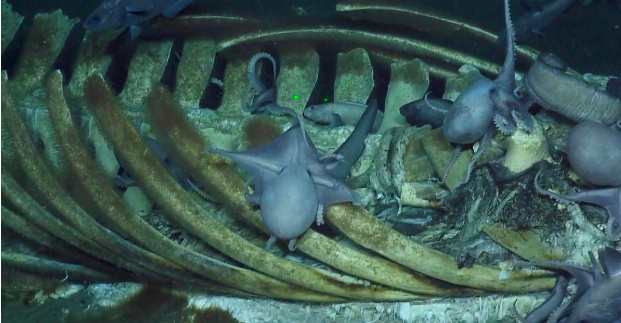
Sponsored By: Brilliant
This article is brought to you by Brilliant, the app that boosts your analytical skills with bite-size lessons in math, logic, CS, and more.
Author’s Note: In newsletter writing you are supposed to get to the point, set a strong hook, and make sure there are immediately obvious takeaways. I wondered what would happen if I deliberately violated each of those rules—this post is the result of that experiment. Thank you for being patient with this column's ceaseless experiments with form and function.
A blue whale is a big son of a gun. Over the course of its 90-year life span, it hauls its 300,000-pound body across 450,000 miles of ocean. To help visualize this, that would be like driving coast-to-coast across America 180 times. Each swish of its ginormous tail is powered by the 12,000 pounds of krill that is its daily brunch.
Their feces is also impressive. After digesting four Volkswagen Beetles worth of seafood each day, the blue whale will ascend to near the surface and, if I may be so crass, let loose. Marine biologists have given these explosive events the delightfully euphemistic nickname of a “whale pump.” This event is surprisingly vital for the health of the ecosystem by providing nutrients for plankton growth. Plankton in turn feed many other species of fish and, eventually, turn into long-term storage of carbon that sits on the seafloor for decades. Essentially what I’m saying is that if we gave enough blue whales enough black coffee, we would no longer need solar panels. That point is totally irrelevant, but it is one I am compelled to make nevertheless.
Perhaps the most important part of the blue whale’s life cycle occurs when it dies. Assuming it dies of natural causes over deep water, it begins a process known as a whale fall. As the corpse slowly, slowly, slowly descends to the ocean floor, a swarm of ocean scavengers begin to feast. They include, but are not limited to, the following: sleeper sharks, hagfish, giant isopods, lobsters, crabs, octopus, polychaetes (what is this? I have no idea), shrimp, prawns, sea cucumbers, and squat lobsters (not to be confused with its cousin, the incline bench press squid).
Each stage of descent and depth is marked by a different type of feast. Rather than begin with an amuse-bouche of some small part of the blue whale, the first diners go immediately for the entree—the soft tissue. Sharks and hagfish will slowly gnaw on the muscle fibers and globby bits of fat.
Next, a coterie of sea creatures begins to nest within the whale’s corpse. These bottom dwellers' names are so ridiculously challenging to pronounce that when said quickly you may inadvertently cast a curse of Poseidon on your home. (For your safety I have deemed it necessary to remove them from this text). Along for the ride, bacteria and fungi also start breaking down the bones, muscle, and other tissues. As all of these creatures have their fill, the soil underneath the carcass becomes rich with nutrients, leading to additional life. This phase can last for two years or so.
Finally, we reach the final stage, one that may last up to 50 years, given the enjoyably alliterative sulfophilic stage. Here, various bacteria break down the lipids contained within the whale’s bones, and up to 30K various microorganisms will settle in around the whale’s carcass. The decomposition can take so long because of two factors unique to the bottom of the seafloor: enormous pressure and a total lack of sunlight.
In total, a dead whale can sustain thousands of creatures, fertilize the soil, solve climate change, and potentially give you nightmares when you view it.
Watching this bloated, big-ass blue whale slowly picked apart by scavengers reminds me a lot of what happens to rich people when they die. In particular, it reminded me of Sumner Redstone.
The Only Subscription
You Need to
Stay at the
Edge of AI
The essential toolkit for those shaping the future
"This might be the best value you
can get from an AI subscription."
- Jay S.
Join 100,000+ leaders, builders, and innovators

Email address
Already have an account? Sign in
What is included in a subscription?
Daily insights from AI pioneers + early access to powerful AI tools











Comments
Don't have an account? Sign up!